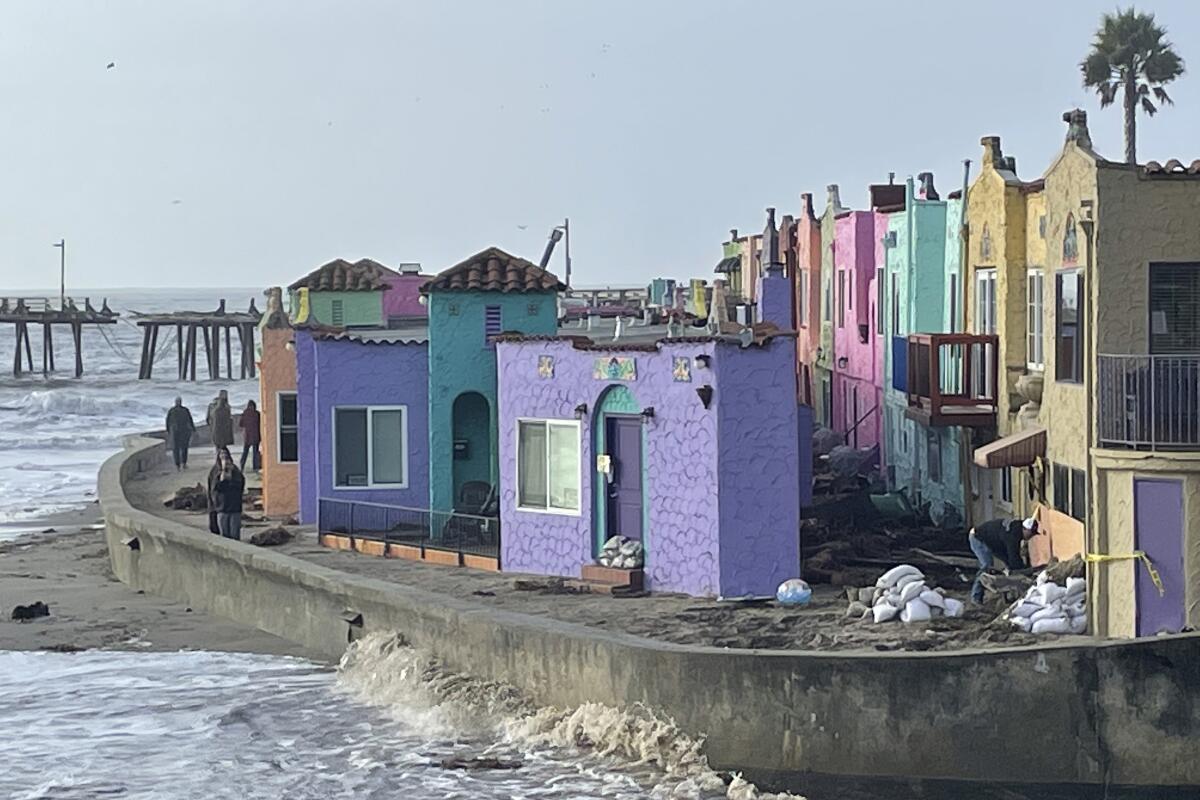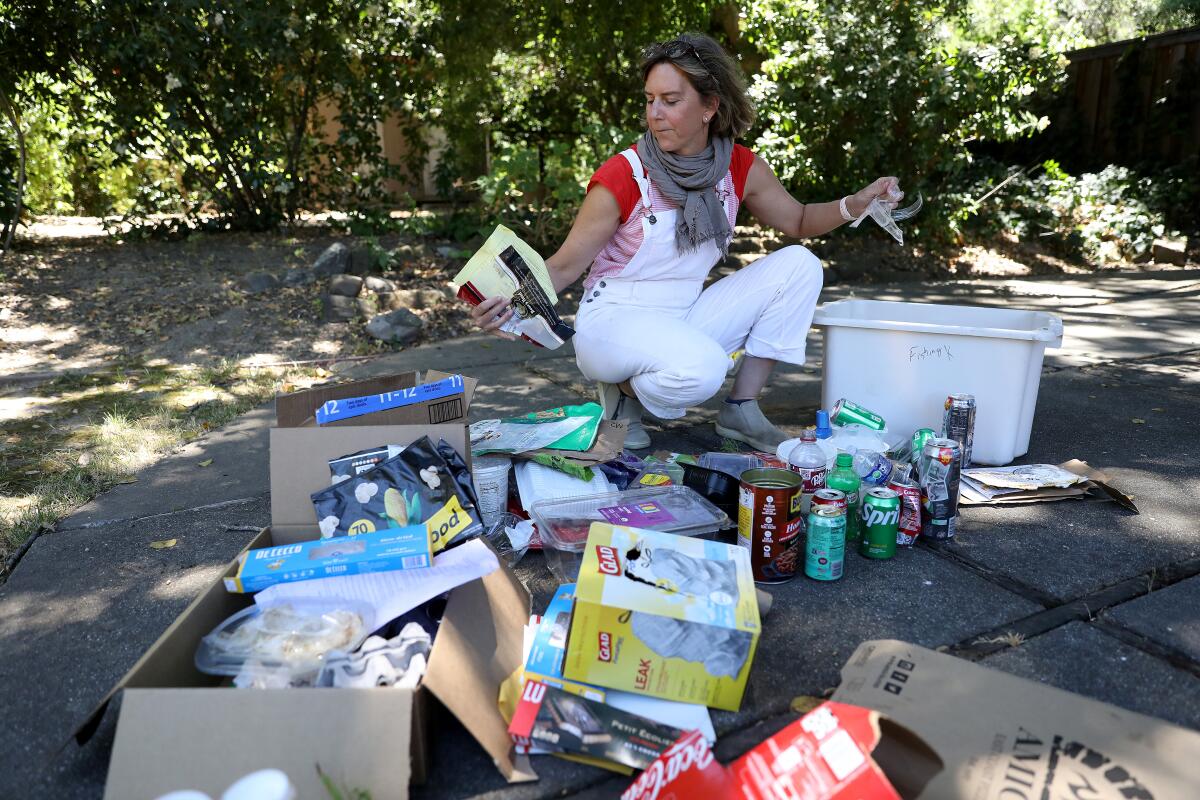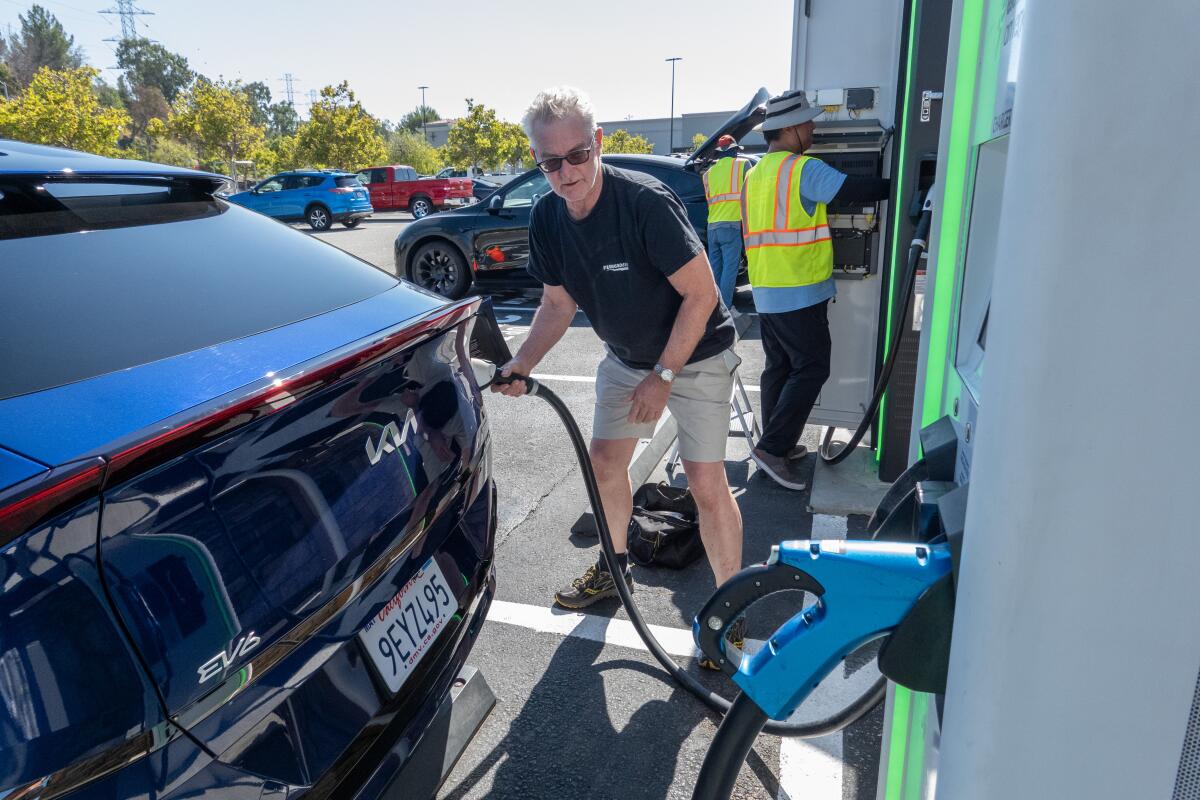Boiling Point: The climate change challenge is ours

- Share via
This story originally published in Boiling Point, a weekly newsletter about climate change and the environment. Sign up here to get it in your inbox.
Hi, I’m Russ Mitchell. I write about electric vehicles for the Los Angeles Times and I’m filling in this week for Sammy Roth.
We link here to many stories from many of our journalism colleagues across the U.S. and around the world. This week we’re going to be extra promotional, because the Los Angeles Times over the last month has published an extraordinary series of stories and assembled them in a convenient package.
Edited by Alice Short, “Our Climate Change Challenge” focuses on what must be done to slow down and ultimately reverse global warming, and who needs to do it: not just government and business, but every one of us.
Sammy kicks it off with a call to action. Two decades have passed since the first state law was passed to force a shift from fossil fuels to renewable energy. Clearly, it’s not enough. Deadly wildfires, record heat, record drought, record floods — we’re living the reality of climate change. Energy transitions take time, but time is short. We all have work to do, and Sammy offers his ideas, based on years of dogged reporting.
More particularly, how are Californians and California’s government addressing, or not addressing, the “Big Five” climate threats? Namely, extreme heat, wildfires, sea level rise, drought and flooding. Dorany Pineda reviews each threat and asks us to consider whether we’re doing enough.

In a beautifully written excerpt from her new book, “California Against the Sea: Visions for Our Vanishing Coastline,” Rosanna Xia contrasts the beauty of the California coast and the human desire to live near it with the precarious existence that accompanies that deep desire.
“On the sand, on the sand, on the sand,” says coastal geologist Gary Griggs. “Everybody wants to live on the sand.” He understands this pull to the water, a mark of wealth and well-being that goes hand in hand with today’s notion of the California dream. But by romanticizing the coast in all its vast and freeing splendor, we blind ourselves to the very forces that created this landscape in the first place.
Heat is killing trees the world over. Columnist Steve Lopez considers the depopulation of Joshua trees caused by heat and fire, and the wider threat to the Mojave desert ecosystem. “No rain means no wildflowers, which means no dropped seeds, which means fewer rodents, snakes and birds.”
Climate problems feel overwhelming, but Abigail Siatkowski looks at how you can make a difference, and get outside and have fun while you’re at it.
The climate series packs in plenty of other suggestions for reducing your carbon footprint and your contribution to pollution:
PLASTIC
Made from fossil fuels, plastic in its many forms pervades modern life. Susanne Rust thought she’d try to go a week without plastic. After a glance at the plastic objects scattered in and around her desk, she gave up, and instead spent a week taking inventory. “Plastic is everywhere,” she says.

What to do about it? Jessica Roy looks at plastic bags and reusable bags, and the human tendency to go with what’s most convenient, ignoring the environmental cost. Alice Short interviews the “Zero-Waste Chef” about how a cook can break up with plastic. And Ada Tseng gives tips to parents on how to shrink those big piles of plastic toys.
TRANSPORTATION
We offer tips on buying an electric car (by yours truly) and thoughts on fuel cell cars. From Rachel Uranga, the environmentally friendliest way to travel around L.A. is also one of the toughest — living without a car at all.

John Rossant, chief executive of Comotion and international impresario of the multi-model transportation world, contributes an optimistic but plausible piece about what transportation could look like in 2024, if we make the right decisions about technology and policy now.
RECYCLING
We’re making good progress as recyclers, but have a long way to go. (Notice a theme here?)
Karen Garcia reviews the challenges. James Rainey does the same for composting, the most natural form of recycling. There are tips for using the green bin. Sonja Sharp turns to tampons, pogs and boxes to illustrate our cardboard dilemma. Max Kim, our man in Seoul, sees South Korea’s composting approach as a model for the world to follow. One advantage: cultural agreement.

ADAPTATION
I grew up in Chicago, and if I ever return to live there, I’ll be grateful for Lake Michigan. That’s a lot of fresh water. In Los Angeles, global warming and drought could dry the place out. Ian James profiles Southern California’s “water doctor” and his urgent push to adapt, and survive.
Carolina Miranda looks at environmental building design and how beautiful it can be.
And Jon Healey analyzes whether you should lease rooftop solar, buy it or not go solar at all.
ONE MORE THING
My 17-year-old daughter and I watched Vikram Ramaswamy talk about climate change at the recent Republican wanna-be-president debate.
“Guy’s wack,” she said.
He made a good point: That progressives don’t acknowledge that we’ll be stuck with some level of fossil fuels for a long time to come. But when he started out pushing for coal and calling climate change a hoax, he totally lost her.
Next election, she’ll be able to vote.
“He says he appeals to the millennials,” she said. “But he’s sure not going to get votes from any Gen Z.”
We’ll be back in your inbox on Thursday. To view this newsletter in your Web browser, click here. For more climate and environment news, follow me on Twitter at @Russ1Mitchell — and @Sammy_Roth, the regular author of Boiling Point, who will be back soon.
Toward a more sustainable California
Get Boiling Point, our newsletter exploring climate change, energy and the environment, and become part of the conversation — and the solution.
You may occasionally receive promotional content from the Los Angeles Times.




